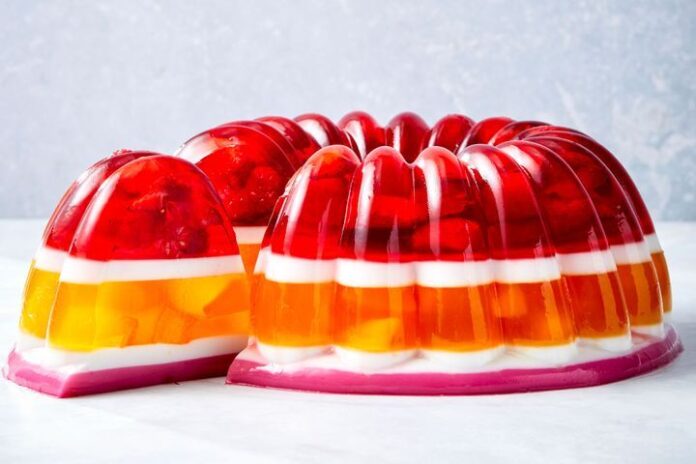Welcome to Recipesjelly.com www.recipes jelly.com, your one-stop destination for all things wobbly, sweet, and delightful! Jelly, known as Jell-O in some parts of the world, is more than just a childhood treat. It’s a versatile dessert that can be a simple snack, an elegant dinner party finale, or a creative culinary project.
In this comprehensive guide, we’ll dive into the wonderful world of jelly, exploring its basics, classic recipes, gourmet variations, and tips for perfect results every time Recipesjelly.com www.recipes jelly.com.
What is Jelly?
At its core, jelly is a sweetened, gelatin-based dessert. Gelatin, a protein derived from collagen, has the unique property of forming a semi-solid matrix when hydrated and cooled, giving jelly its signature jiggle. The basic components are simple:
- Gelatin: The setting agent.
- Water: The liquid base.
- Sugar: For sweetness.
- Flavorings & Colorings: From fruit juices to artificial flavors.
The Classic: Perfect Basic Fruit Jelly
This is the foundation for all jelly creations. Master this, and you can build anything.
Ingredients:
- 2 cups of fruit juice (apple, orange, or grape work well)
- 2 tablespoons (2 packets) of unflavored gelatin powder
- 1/4 cup cold water
- 1/4 cup sugar (adjust to taste)
- Optional: Fresh fruit pieces like berries or sliced peaches
Instructions:
- Bloom the Gelatin: Sprinkle the gelatin powder over the 1/4 cup of cold water in a wide, shallow bowl. Let it sit for 5-10 minutes. It will absorb the water and become a solid, spongy mass. This “blooming” step is crucial for preventing clumps.
- Heat the Juice: In a small saucepan, gently heat 1 cup of the fruit juice with the sugar. Warm it over medium heat until the sugar dissolves completely. Do not let it boil.
- Dissolve the Gelatin: Remove the warm juice from the heat. Add the bloomed gelatin and stir continuously until it is completely dissolved and the mixture is clear.
- Combine and Cool: Pour the dissolved gelatin mixture back into the remaining 1 cup of cold juice. Stir well. This step helps cool the mixture down quickly.
- Pour and Set: Lightly grease your molds or serving glasses with a neutral oil. If using fruit, place it at the bottom of the molds. Carefully pour the jelly liquid over it.
- Refrigerate: Cover and refrigerate for at least 4 hours, or preferably overnight, until fully set.
Beyond the Basics: Creative Jelly Recipes
Once you’ve mastered the classic, it’s time to get creative!
1. The Elegant Panna Cotta Jelly
A sophisticated Italian dessert that’s essentially a creamy, vanilla-infused jelly.
Ingredients:
- 2 cups heavy cream
- 1/2 cup sugar
- 1 packet (2.5 tsp) unflavored gelatin
- 3 tablespoons cold water
- 1 teaspoon vanilla extract
Instructions:
Bloom the gelatin in cold water. Heat 1 cup of cream with the sugar until hot but not boiling. Off the heat, dissolve the bloomed gelatin into the hot cream. Stir in the remaining cream and vanilla. Pour into ramekins and chill for 6+ hours.
2. The Refreshing Wine Jelly
A stunning and adult dessert perfect for entertaining.
Ingredients:
- 2 cups of your favorite wine (Rosé, Moscato, or a light Pinot Grigio)
- 1 packet unflavored gelatin
- 1/4 cup cold water
- 2-3 tablespoons honey or sugar
- Fresh berries and mint for garnish
Instructions:
Bloom gelatin in cold water. Gently warm 1/2 cup of the wine with the honey, stirring to dissolve. Off the heat, stir in the gelatin until dissolved. Mix with the remaining wine. Pour into glasses and chill. Garnish with berries and mint before serving.
3. The Layered Rainbow Jelly
A fun and vibrant project that’s a hit with kids and the young at heart.
Method:
Prepare your basic jelly recipe using clear juice (like white grape or apple) and divide it into several bowls. Tint each bowl with a different food coloring. Pour the first layer into a pan and refrigerate until just set (about 30-45 minutes). Gently pour the next layer on top and repeat until all colors are used. The key is patience—each layer must be set enough to support the next without mixing.
Pro Tips for Perfect Jelly Every Time
- Don’t Boil Gelatin: High heat can break down gelatin’s setting power, resulting in a weak set. Always dissolve it in warm, not boiling, liquid.
- Acid is Tricky: Highly acidic ingredients like fresh pineapple, papaya, figs, and kiwi contain an enzyme (bromelain) that breaks down protein and prevents gelatin from setting. Use canned versions of these fruits (the canning process deactivates the enzyme).
- Speeding Up Setting: Pour your jelly mixture into a shallow pan for a faster set. You can also place the mold in a bowl of ice water after pouring, but be careful not to slosh it.
- Unfolding Like a Pro: To unmold a jelly, dip the mold just up to its rim in warm water for 5-10 seconds. Remove it, dry the bottom, and gently pull the jelly away from the edges with your fingertips. Place your serving plate on top and flip it over with confidence. Give it a slight shake if needed Recipesjelly.com www.recipes jelly.com.
Jelly FAQs
Q: Can I make vegan jelly?
A: Absolutely! Agar-agar, a seaweed-derived product, is a fantastic plant-based alternative to gelatin. It sets firmer and at room temperature. Use it according to package instructions, as the substitution ratio is not always 1:1.
Q: Why is my jelly rubbery?
A: You likely used too much gelatin. Follow the recipe measurements carefully for the perfect wobbly texture.
Q: Why is my jelly not setting?
A: This could be due to not using enough gelatin, not allowing enough chilling time, or using fresh, enzyme-rich fruits that prevented setting.
Conclusion
Jelly is a timeless dessert that offers endless possibilities for creativity and flavor. Whether you’re making a simple snack for the kids or an elegant panna cotta for guests, the magic of that perfect jiggle is always satisfying.
We hope this guide inspires you to get into the kitchen and start jiggling! Explore the rest of Recipesjelly.com www.recipes jelly.com for more detailed recipes, themed ideas, and jelly-inspired culinary adventures.



